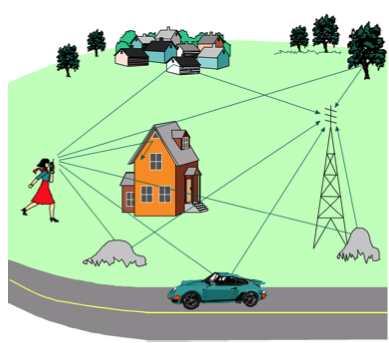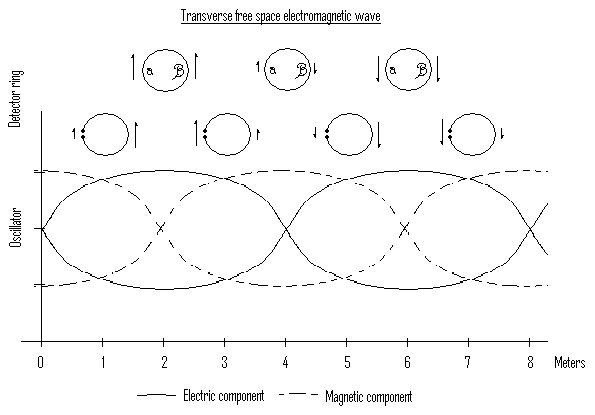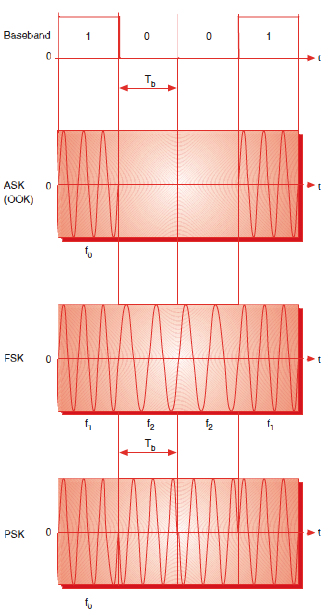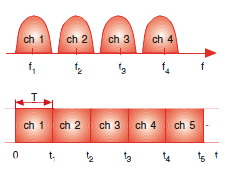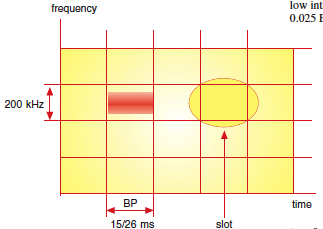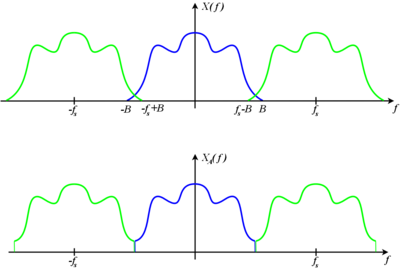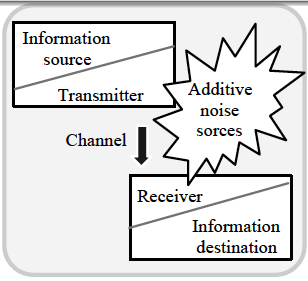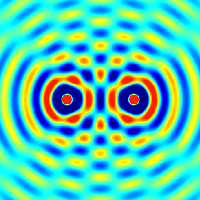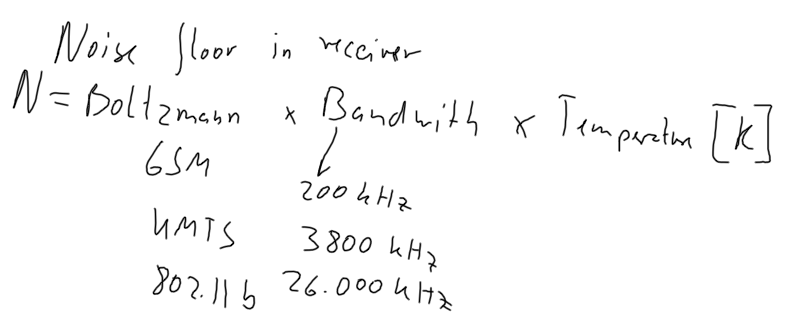UNIK4700/UNIK9700 Basics of Propagation
Josef Noll,
UNIK4700 Radio and Mobility
Lecture 2: Basics of communications
Principles of radio communication
- radio wave propagation
- Electromagnetic signals
- Nyquist Theorem
- Signal/noise ratio
- Shannon Theorem
- Signal strength
TOC on A1-Electromagnetic signals
Wave Propagation Parameters
Can also be called "Propagation constant". Somewhat misleading, as the propagation usually varies strongly.
Alternative names:
- Transmission parameters
- Propagation parameters
- Propagation coefficients
- Transmission constants
- Secondary coefficients
Propagation constant, symbol γ, is defined by the ratio between the amplitude at the source, and the amplitude at some distance x. Is a complex quantity, so we use α (attenuation constant) and β (phase constant) to define it. Attenuation constant, is the loss of signal, or attenuation of an electromagnetic wave travelling through a medium. Phase constant is the change in phase per meter, along the path travelled.
Wave propagation and absorption mechanisms
| Band | Frequency | Wavelength | Propagation via |
| Very low frequency, VLF | 3-30 kHz | 100 - 10 km | Guided between the earth and the ionosphere. |
| Low frequency, LF | 30 - 300 kHz | 10 - 1 km | Guided between the earth and the D layer of the ionosphere. Surface waves. |
| Medium frequency, MF | 300 - 3000 kHz | 1000 - 100 m | Surface waves.E, F layer ionospheric refraction at night, when D layer absorption weakens. |
| High frequency, HF (short wave) | 3-30 MHz | 100-10 m | E layer ionospheric refraction. F1, F2 layer ionospheric refraction. |
| Very high frequency, VHF | 30-300 MHz | 10-1 m | Sporadic E propagation Extremely rare F1,F2 layer ionospheric refraction during high sunspot activity up to 80 MHz. Generally direct wave. |
| Ultra high frequency, UHF | 300-3000 MHz | 100-10 cm | Line-of-sight propagation. Sometimes tropospheric ducting. |
| Super high frequency, SHF | 3-30 GHz | 10-1 cm | Direct wave. |
| Extremely high frequency, EHF | 30-300 GHz | 10-1 mm | Direct wave limited by absorption. |
The frequencies which we use for mobile communications are ranging from 450 MHz (ICE), the old TV bands, 800-900 MHz (GSM), 1800 (GSM), 1900, 2100 MHz (UMTS), 2400 MHz (Wifi), 2650 MHz (LTE), and 5100 MHz (IEEE802.11a..). While previously frequency band were used for a specific technology, refarming started in 2012 to open for communication technologies in other bands. Examples of such refarming are LTE1800 indicating an operation of LTE in the 1800 band. Back in 2013 Apple surprised the European operators, as the iPhone came with LTE only in the 1800 band, and not, as usual in Europe, in the 2600 band.
Further readings
- see Wave Propagation Parameters (by Joachim Tingvold)
What will we learn today
Heinrich Hertz - Radiowave propagation
Electromagnetic signals
* Prerequisite: Ohm's law, current, dielectric constant
[Source: Wikipedia] Note: Depending on the convention, either |
Coding and Modulation
A modulated radio signal can be written in a general form:
Any of these three parameters can be varied: amplitude-, frequency- or phase-modulation.
- Channel-coding is used to reduce bit-error-rate, e.g. through forward error correction.
- Multiplexing is used to split the total amount of radio into smaller pieces. Typical: time, frequency or code multiplex. examples
[Source:K.E. Walter, Basics of Mobile Communications]
Modulation types
Frequency and time division multiplexing
Code division multiple access
UMTS as an example (in one of the future lectures)
A3-Digital Communication Principles
Chapter A3 - Digital Communication Principles
- radio wave propagation
- Electromagnetic signals
- Nyquist Theorem
- Signal/noise ratio
A4-Signal Strength and Capacity
- Shannon Theorem
- Signal strength
Nyquist Theorem
Hartley's law
- The amount of information that may be transmitted over a system is proportional to the bandwidth of that system.
- where m is the “number of current values”, which in modern terms would be called “the size of the signalling alphabet”
Why did it take twenty years to fill the gap between Hartley’s law and Shannon’s formula? The only necessary step was to substitute 1+C/N for m in Hartley's law. Why, all of a sudden, did three or more people independently “see the light” almost at the same time? Why did neither Nyquist, nor Hartley or Küpfmüller realize that noise, or more precisely the signal-to-noise ratio play as significant a role for the information transfer capacity of a system as does the bandwidth?
[source: L. Lundheim, Telektronikk 2002]
Electromagnetic channel
Sources of noise
* Electronic parts of transmitter and receiver (components)
|
Radio
- In-band interference
- out-of band interference, e.g. GSM/NMT interference
- radio channel, e.g. scattering, multi-path
[Source:Wikipedia, "interference"]
- further explanations: Telektronikk 4/95, Rækken and Løvnes, Multipath propagation
Signal/noise ratio
,
where P is average power
- why talking about noise?
- dB,
- near-far problem
[source: Wikipedia]
Shannon Theorem
Shannon's theorem will be part of next lecture...
Summary
- radio wave propagation explain
- Electromagnetic signals
- Nyquist Theorem
- Signal/noise ratio
